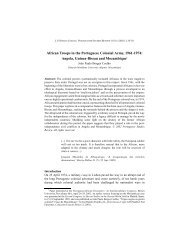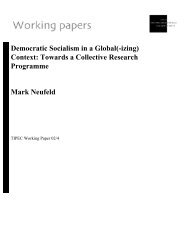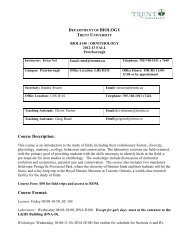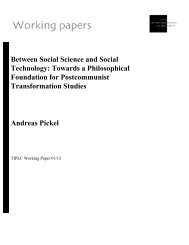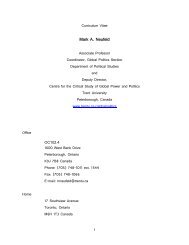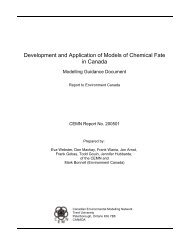AUTHOR COPY - Trent University
AUTHOR COPY - Trent University
AUTHOR COPY - Trent University
Create successful ePaper yourself
Turn your PDF publications into a flip-book with our unique Google optimized e-Paper software.
Shroff<br />
healing to a point where power relations are not taken into account. Unfortunately,<br />
this simplistic type of analysis pervades the New Age Movement’s rhetoric, which<br />
results in various forms of ‘victim blaming’ (Crawford, 2006).<br />
Although it is true that the New Age Movement emphasizes fitness, wellness,<br />
prevention and risk reduction, whereas downplaying the vast and ambiguous<br />
external forces that influence health, we must be cautious not to confuse New<br />
Age entrepreneurs with holistic health practitioners. The critique that holistic<br />
health provides an individualistic solution to problems of health by changing<br />
the individual rather than the social causes of illness rings true. Plus, the victimblaming<br />
ideology promoted by some holistic health-care providers shifts the<br />
burden of blame to the individual rather than the social context (Crawford,<br />
2006). Yet this critique applies to allopathic medicine as well. Allopathic<br />
medicine does not encompass a social and political view of the determinants<br />
of health either. In itself, it is not a solid enough argument to dismiss holism.<br />
It is, combined with the above arguments of appropriation and class privilege,<br />
a solid basis for dismissing the New Age Movement as opportunistic, however.<br />
In closing<br />
The concept of holism is international and ancient. Crossing countries and<br />
historical periods, holistic thought and health practices based on these thought<br />
forms flourished for centuries and declined over the past 400 years, in part<br />
because of the growth in reductionist thinking and its off-shoot, allopathic medicine.<br />
At present, there is a global re-emergence of holistic thinking and holistic<br />
practices. This article analyzed the historical, as well as contemporary basis of<br />
holism as interconnectedness, unity and oneness, and its application to holistic<br />
health-care.<br />
Neither the allopathic nor the holistic model of care attend to social inequities,<br />
yet holistic practices generally take into account the many facets of the<br />
individual – emotional, social, mental and spiritual. It is partly for this reason<br />
that holistic care is popular. However, holistic health-care can be improved, and<br />
serve the needs of more people if race, class and gender analyses were taken<br />
into account. The health of the individual is clearly linked to her or his income,<br />
employment, security and social status. Deepening our understanding of the<br />
impact of social inequities on an individual’s health will contribute to more<br />
efficient and just (holistic) health-care systems. Major institutions are currently<br />
studying alternative medicines, including herbal remedies, bodywork, meditation,<br />
dietary changes and more. Various studies, including some randomized<br />
clinical trials, are available on almost every type of alternative healing practice,<br />
and they typically show good results (Jonas et al, 2006; Carlson et al, 2007;<br />
Garner et al, 2007; John et al, 2007; Maa et al, 2007; Sareen et al, 2007; Wang<br />
et al, 2007). Working together, there is great potential for holistic health-care<br />
<strong>AUTHOR</strong> <strong>COPY</strong><br />
252 r 2011 Macmillan Publishers Ltd. 1477-8211 Social Theory & Health Vol. 9, 3, 244–255




